Research paper vs white paper: how are they different?
- September 14, 2022
Research paper vs white paper is a conundrum white paper writers frequently encounter. Most people had to write research papers when they were in high school and college, and many people work in industries where researchers and scientists publish research papers to inform colleagues and industries of what they’ve learned. So when they hear someone mentioning white papers, they can’t be faulted for assuming they’re the same thing. (Originally, a white paper was an official government report.)

What are research papers?
Research papers are formal documents or scientific articles exploring a particular subject in detail, and supporting the writer’s contention or arguments by including evidence from outside experts and other sources. Most research papers follow standardized structures, often beginning with some type of a thesis statement, presenting a series of arguments or sources in support of that statement, and ending in a statement about whether the thesis was successfully proven.
For students, academic papers are usually assigned to determine their mastery of a topic or their ability to write in traditional academic style. Professionals use peer reviewed research papers for a different reason. They want to share an idea they had and whether it proved to be possible, useful, or even valuable.
Scientific papers
Peer reviewed research papers are particularly important in the sciences. For example, many medical advances are first documented by the doctors or other scientists who discovered and tested them. An oncologist may stumble upon a combination of treatments that’s particular effective on a difficult-to-treat cancer. The doctor tests his idea following standard procedures and protocols and discovers it’s effective 86 percent of the time, so they write a research paper explaining the treatment and recommending the next steps for researchers.
The scientific research paper process is designed to explore all existing knowledge to create new ideas and discoveries, then document everything to help the scientist who pushes the frontiers of knowledge even further.
Publishing research papers
Recognition of the value of what a particular research paper analyzes often comes in the form of being published in an peer reviewed academic journal. Generally, an academic journal uses a peer review process in which several professionals read papers that have been submitted before publishing research papers. They ensure a logical framework is used and also make sure any statistics and other information used reflect peer reviewed research standards.
What is a white paper?
White papers are documents that explore complex issues to educate audiences. When used in a marketing or policymaking context, a white paper provides enough facts and arguments to convince people that your product, service, or strategy offers the best solution for the situation, educating them about the issue and making a case for your position or advice. Potential customers search for the information found in white papers.
White papers offer an excellent way to explain what makes your solution better than competing alternatives. You can use them to provide a technical discussion or summarize key information about a particular issue or problem to help the reader develop a stronger understanding. You describe common problems current and prospective customers face and provide detailed explanations as to how your approach provides the best solution.
Unlike ads and brochures, white papers are generally not promotional, without a strong sales pitch. Because the audiences that white papers target — such as engineers, CFOs, and CEOs — tend to distrust materials that appear to be more “salesy” than informative, most white papers are simply set up to look like trade magazine articles with fewer pictures.
So research paper vs white paper?
As in how they are different? First, they have two very different purposes. The purpose of a research paper is, for students, to prove mastery of a subject. For professionals, it’s to advance knowledge by sharing discoveries. A white paper, on the other sheet, is a tool to share information and influence decision-making.
Research papers explore all existing knowledge and can never have enough of it. White papers focus on a handful of points. Just enough knowledge to help someone make the right decision and nothing more. Research papers expand the mind, white papers attempt to narrow it.
Typically, research papers are written in the stiff, formal style that’s used in the academic world. You’ll have no trouble recognizing it from your memories of 8th grade English or your college composition class (or whatever fancy term your college came up with because they didn’t think you were smart enough to realize it was a composition class). Remember that long list of rules Mrs. Handsdown recited and all the red ink on your graded papers? Now when you write an email, you sometimes worry that she’s somehow going to see it, and you’ll feel her hovering over your shoulder.
The most effective white papers are written in a friendly, conversational way . Mrs. Handsdown would be very disappointed in you, but your boss will think you’ve become a genius. How so? It starts with the voice and tone of the written word. So you’re already a little confused. How could the written word make sound? Well, I didn’t say that. I said the voice and tone and not sound.
Literacy — the ability to read — is a relatively recent development in the evolution of our species. From the time we were magically created, hatched, or (whatever your image of life celebrates), until mere centuries ago, we had no way to communicate in writing. So we spoke. More important, we listened. Listening could keep us alive. Gradually, we learned the value of sharing what the old had learned from life so the young could take their places.
That was a long time ago, but you know what’s funny? Much of our mental wiring is from that era. Our brains do a great job of collecting and managing information. Was that the doorbell? Did a bird hit the window? Is that noise coming from beast of sharpest teeth? Your brain reacts to all three events the same way. It triggers hormones to kick up your energy and sharpen your senses so you don’t miss a thing. Thanks to some mutual ancestor who managed to stay a step ahead of a sabertoothed tiger, sound gets our immediate interest.
So we’re conditioned to listen for and pay attention to voices. Think of how many of the best times you can remember were spent in conversation with friends or family. Think of the number of interactions you have with other people on a given day, and what percentage include at least some conversation, even if it’s just “mornin’.”
As children, we grasp reading by connecting words with their associated sounds. And because the spoken word is so comfortable for us, we begin to recognize it in what we read. As we read a paragraph, we “hear” a voice in our heads. The voice is how we think the author or the character sounds. Not sure what I’m saying? Have you ever read a book and then seen a movie made from the book? A character speaks and you think, “Hey! He doesn’t sound like that!” You heard his “voice” when you read the book.
Based on the voices they hear, people draw very important conclusions about you. They decide whether you can be trusted. How you will treat them. Whether you’re genuinely friendly or just acting nice. You can control that impression, because you can control that voice.
Sometimes, presenting the right voice means ignoring some of those grammar rules Mrs. Handsdown drummed into your head. Why? Effective copy talks to people, and people don’t speak with textbook grammar. We start sentences with conjunctions, we end them with prepositions. We even use fragments. (That doesn’t mean grammar is unimportant. Forgetting basic agreement or structure can make you sound uneducated. Don’t be afraid to break rules – but do it selectively and with reason.)
By writing a white paper in a friendly, conversational way, you’ll tap into our desire to listen to voices and do a better job of capturing the reader’s full attention.
Is grammar for research and white papers different?
As I mentioned, research papers are usually written in that formal, stuffy academic style taught in high school English and college Composition classes and often used by technical writers.
But writing white papers isn’t about trying to please strict English teachers or jaded Composition instructors. Writing white papers is about selling. Telling. Convincing. Entertaining. Emphasizing. Doing that effectively demands copy that’s individual and personal. In fact, the more copy sounds like conversation, the more effective it tends to be.
That doesn’t mean you should ignore basic rules of grammar and syntax. The degree of grammatical correctness should reflect the situation and the audience. If the primary audience for your white paper is a group of university professors, you’ll want to make it more formal. But if you’re writing to industrial purchasing agents, your white paper should use the kind of language they use every day.
How should white papers be written?
Again, the most effective kind of language to use in a white paper is conversational. It really is okay to use contractions (like “can’t” or “won’t”) because they keep copy talky and friendly. It’s also okay to start sentences with conjunctions like “and” or “but,” and to end them with prepositions. And while you learned not to use “you” when writing for school, using it in a white paper will make it seem more like a conversation you’re having with the reader.
Some companies believe in hiring technical writers for white papers, but technical writers are usually more geared to projects like documentation or manuals, not white papers.
As for format, white papers usually begin with a general summary of the issue or the problem, and then go into depth about that issue or problem. Once it has been explored at length, the paper explains the solutions or approaches that have been developed to address the issue or problem, with a focus on the solution or approach that you want to advance. White papers often end with a brief message about your company and what it offers to prospective customers.
Some white papers include a short abstract at the beginning of the paper to summarize the key messages and conclusion. You can also place a list of other references and sources that the reader may find informative at the end of the paper.
Are there different types of white papers?
Companies may use several types of white papers companies as part of their marketing communications efforts. Most white papers fall into one of the following four categories.
1. White papers for background information
Some white papers are designed to provide background information about an issue or a challenge. Their goal is educating the reader about the matter so they can make more informed and/or confident decisions. An example might be comparing the advantages of shipping by truck with those of shipping by train, so a decision-maker is better able to evaluate which is the right choice for their company.
2. White papers for problems and solutions
Many white papers begin by describing a common problem the audience faces — whether that’s machinery that’s breaking down too often because of contamination issues or erosion tearing the topsoil from newly built slopes. Then the white papers examine the solutions available for that problem. With the machinery, it might involve a different type of lubrication or changes to the maintenance schedule. With the erosion issue, it might involve woven mats of organic materials that help plantings become rooted more quickly so they’re better able to withstand water.
3. White papers about processes
White papers can be an excellent way to explain and explore processes, from the many steps in bringing fresh produce from a farmer’s field to a restauranteur’s table, to the insight professionals like architects bring to design and construction of buildings. A well-written white paper can bring these processes alive for people who need to know about how these things work, such as lawmakers who are considering legislation about affecting those processes.
4. White papers presenting collections of information
This strategy is best when you have many bits of information or advice that would be helpful to readers, but none of them warrants a full-length white paper of their own. They’re often presented as numbered documents with titles such as “20 simple ways to improve your fleet maintenance program.” Readers are often attracted to this type of white paper because it’s easy to read and normally simplifies otherwise complex topics.
Could our business benefit from white papers?
If you can answer “yes” to any of the following five questions, it’s likely white papers can help you. In fact, more “yes” answers you provide, the more likely white papers should be part of your organization’s toolkit.
1. Is what you offer complicated, innovative, or different than your competitors?
If your company’s product or service is complicated, innovative, or significantly different from what your competitors provide, creating a white paper may be one of the most effective ways to convince people it’s the best choice for them.
That’s because selling something complex or innovative demands helping the prospect see why it represents a better choice. It’s hard to do that convincingly in an ad or email, but a well-written white paper provides enough facts and arguments to educate them while helping them reach the decision you want.
2. Is advertising not sufficient to explain the advantages of what you offer?
While advertising or other traditional marketing methods can be effective channels, they rarely allow you to get into detail about what makes your product or service better. Plus, many people are wary of channels such as advertising because they know it’s a blatant sales effort.
A well-crafted white paper is an informational tool that seeks to educate the reader. Because the white paper doesn’t appear to be as promotional, people will give it more credence. Plus, people tend to hang onto white papers longer than they retain ads, giving your message a longer life.
3. Do prospects and customers find it hard to grasp your value proposition?
Like you, your customers and prospects are hungry for good information, but they’re also busy. Because their time is limited, they appreciate practical guidance that’s focused on their specific needs, and they trust white papers more than other channels.
They’re willing to take the time to read white papers because they need to know something. Maybe they want to better understand a new technology. Perhaps they’re desperately seeking a solution for a problem that’s hurting their business. Or it could be that they want support for a recommendation they’re making to their bosses. Whatever the reason, white papers provide trustworthy information and improve their perception of your organization and what you offer.
4. Is your sales process lengthy?
If your product or service is a commodity, is easily understood, or typically is purchased on impulse, a white paper probably won’t do much for you. But if you’re selling a high-value product or service that takes many weeks or months to move from initial interest to finished deal, a white paper can help you speed the process along.
5. Does your customers’ decision-making process involve many people?
Often — particularly with items that involve a significant investment of capital, such as plant equipment — purchase decisions are not made by just one or two people at your prospect. They may have the status and authority to recommend what you offer, but getting final approval may require the blessing of everyone from production engineers, to the operations team, to the CFO and CEO. Unfortunately, you and your team can’t speak with everyone who will play a role in the decision.
That’s when a white paper can stand in for you. A white paper that discusses the advantages of what you offer, contrasts it with other options, and explains how users can get the greatest value from it will help you communicate with decision-makers you can’t reach directly. When your contact attaches your white paper to their recommendation, it not only provides evidence that it’s the right choice, but it may help to answer questions and overcome objections other people in the process may have.
You may also like

Evaluate the Quality, Power of Your Writing with A White Paper Checklist

Can a pro improve a white paper you’ve written?

What business writers need to know white papers and copyrights
Our daily newsletter.
Get the latest and our most important news
I agree to the privacy policy .
- Follow us on Facebook
- Follow us on Twitter
- Criminal Justice
- Environment
- Politics & Government
- Race & Gender
Expert Commentary
White papers, working papers, preprints, journal articles: What’s the difference?
In this updated piece, we explain the most common types of research papers journalists will encounter, noting their strengths and weaknesses.

Republish this article

This work is licensed under a Creative Commons Attribution-NoDerivatives 4.0 International License .
by Denise-Marie Ordway, The Journalist's Resource February 25, 2022
This <a target="_blank" href="https://journalistsresource.org/media/working-papers-research-articles/">article</a> first appeared on <a target="_blank" href="https://journalistsresource.org">The Journalist's Resource</a> and is republished here under a Creative Commons license.<img src="https://journalistsresource.org/wp-content/uploads/2020/11/cropped-jr-favicon-150x150.png" style="width:1em;height:1em;margin-left:10px;">
This tip sheet, originally published in May 2018, has been updated to include preprint research, a type of research featured often in news coverage of the coronavirus pandemic.
Journalists rely most often on four types of research in their work. White papers, working papers, preprints and peer-reviewed journal articles.
How are they different? And which is best?
Below, we explain each, pointing out its strengths and weaknesses. As always, we urge journalists to use care in selecting any research to ground their coverage and fact-check claims.
Peer-reviewed article
Peer-reviewed research — the kind that appears in academic journals and that we highlight here at The Journalist’s Resource — has undergone a detailed critique by scholars with expertise in the field. While peer-reviewed research is generally the most reliable, journalists should keep in mind that publication in a prestigious journal is no guarantee of quality and that no single university or research organization always does the best research on a given topic.
It is safe to assume, however, that articles published in top-tier journals have been reviewed and given a stamp of approval by a number of accomplished scholars. For journalists who are uncertain, we’ve put together a list of 13 questions to ask to gauge the quality of a research article.
Keep in mind that not everything that appears in a scholarly journal has been peer reviewed. Journals publish various types of content, including book reviews, editorials, letters to the editor and, sometimes, even poetry.
Working paper
This broad category describes research papers that have not been peer reviewed or published in a journal. Working papers can be in various stages of completion. One might be ready for publication in a prestigious journal while another requires significant editing and other changes that could actually alter its main findings. Sometimes, working paper findings are so preliminary, authors will advise against citing their work .
Even so, working papers are a great way for journalists to gain access to new research quickly. The peer-review and publication process can take months to a year or longer, which means that by the time studies get published, their findings are sometimes not as useful or the data are old.
In choosing working papers, journalists should communicate with scholars about the progress of their research and how confident they are in their findings. It’s a good idea to seek corroboration from peer-reviewed research and to ask other researchers for help assessing a study.
A preprint is similar to a working paper in that it has not been vetted through a formal peer-review process. However, preprints tend to be more complete . Also, preprints submitted to public servers such as the Social Science Research Network and the health sciences server medRxiv get a cursory screening before they’re published online for public view.
Preprints, like academic journal articles, are assigned a Digital Object Identifier , or DOI, and become a permanent part of the scientific record.
White paper
A white paper is a report, often compiled by government agencies, businesses and nonprofit organizations, that outlines an issue and often explores possible solutions to a problem. For example, in November 2021, the federal Office of Community Oriented Policing Services released a white paper looking at factors that help or hinder law enforcement recruitment of Black Americans. Earlier in the year, the Advanced Technology Academic Research Center published a white paper on the American Rescue Plan ‘s widespread implications for government agencies.
In the business world, white papers also are used for marketing purposes — to describe a new product or approach, for instance, or diagnose a problem.
While a white paper can help journalists get up to speed quickly on an issue, it’s important to note some white papers advocate a specific position or policy change. Some rely on incomplete research or research that has not been peer reviewed.
Looking for more guidance on writing about research? Check out our tip sheets on covering biomedical research preprints amid the coronavirus and what journalists should know about peer review .
The Journalist’s Resource would like to thank Matthew Baum , the Marvin Kalb professor of global communications and professor of public policy at Harvard Kennedy School, for his help preparing this tip sheet.
About The Author
Denise-Marie Ordway
- +61 2 8091 4990
- +1 (315) 636-4830
- +44 2071 939560

- What we offer
- Blog Writing
- Pillar Articles
- White Papers
- Case Studies
- Website Copywriting
- Industries we help
- Portfolio & FAQs
Follow us on
Engineering Copywriter Blog
Content marketing tips and insights to help grow your engineering audience, what is the difference between white papers and research papers.

If you’ve ever read research papers and white papers and thought they were kind of the same thing, well, this article is here to say otherwise. As similar as they may look in structure, these two papers have their own distinctions. It is important as a consumer to understand how these two differ from each other. Therefore, in this article, we will present the key differences between a white paper and a research paper.

Image Source: Pixnio
We define research papers as academic papers published in journals that contain results of original research or an evaluation of research conducted by others with the overarching aim of contributing to a body of knowledge. These are often reviewed by scholars with experts in different fields of science and technology. Research papers are usually written in order to prove or disprove a theory, demonstrate research results, and show new discoveries. Research papers show the strength and weaknesses of their proposition in a transparent manner as it provides evidence in a logical framework. Publishing research papers usually takes a long time as it requires peer reviews.
White papers show outlines on a particularly complex issue and tackle the best solution to that particular problem. They are more focused on solving industry problems presented through a technical discussion. White papers are typically used to advocate for a certain position or product and are often utilized in marketing to influence a customer’s purchasing decision. It is meant to impact customers in one conclusive direction that favors the company but it is presented in a factual and logical manner.

The people behind research papers are academic scholars who are knowledgeable in that certain fields of the discussed topics. They are mostly engineers, scientists, doctors, surgeons, and postgraduate students among others. Their written works are backed by various sources written by other experts on the same topic. For research papers, knowing the author who publishes the research is important for credibility and their professional experience is also of key importance. Future references for research papers must include the author.
In contrast, in-house company staff, subject matter experts, or writers under contract for example are the ones who are responsible for writing white papers. It is important to understand that white papers focus more on the company or its product rather than the author. White paper authors may or may not have background information regarding a topic, and they often produce content through research. They are solely hired by companies for the purpose of creating the document. Hiring technical writers is becoming an industry norm and would be both beneficial and profitable to sponsoring companies.
Since research papers are mainly written for information and education, their main readers are those who are in the academic field like students, professors, researchers, and scientists. It is presented through scientific publications, lectures, conferences, and interviews.
White papers are targeted at potential customers to attract more interested buyers on a certain product, service, or brand and therefore, potentially increase the company’s profits. It is mainly used to impact the reader’s decision into adhering to the product or approach that the paper is supporting.

In essence, a research paper analyzes a perspective or argues a point backed up with the ideas and information of other credible people. It presents the results of a study or lengthy experiment without any bias in order to contribute to the overall scientific body of knowledge.
White papers, on the other hand, are used to advocate a specific good or trade name. It directs the reader to make a specific decision using facts and logic. They are widely used for commercial purposes and could influence the judgments of current and prospective customers.
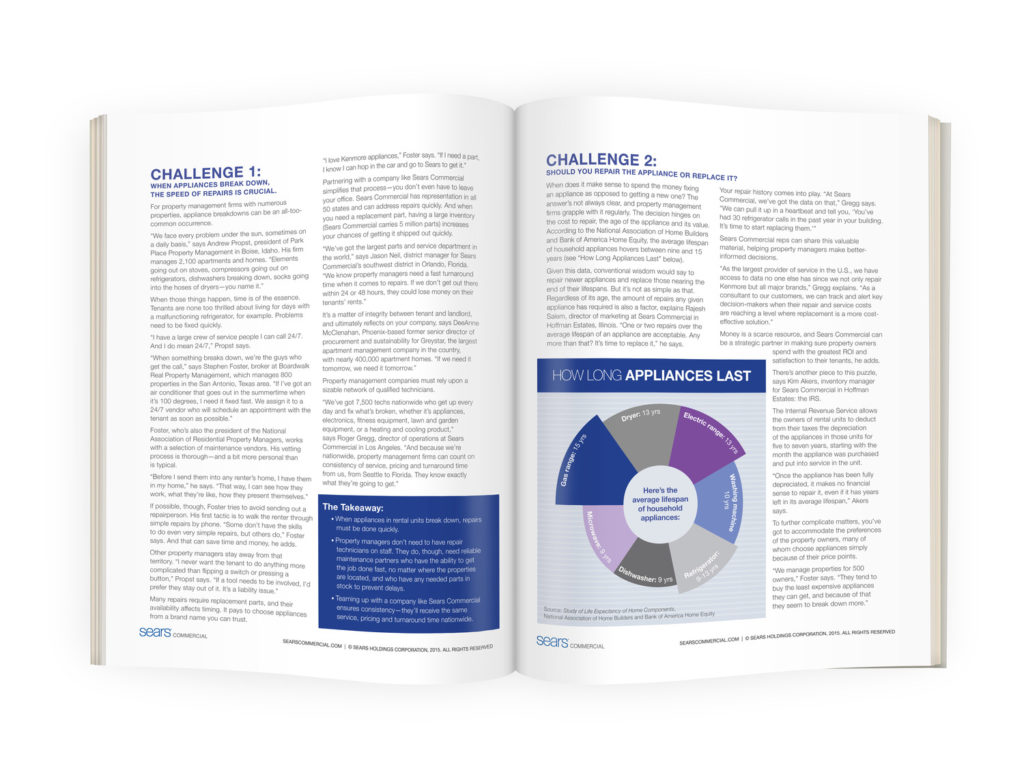
Image Source: Copy Press
A research paper is written to present facts and results backed by credible data from other experts in the field and is meant to add to the overall knowledge on that specific topic, to encourage future research, or just clarify a certain fact.
A white paper, on the other hand, is written with the intent to persuade the reader to reach a specific conclusion and if that reader does reach that desired conclusion, it is considered a sale or profit. A white paper may not outrightly contain a sales pitch but the content is carefully crafted so as to influence the reader in a certain way that profits the company that publishes it.
If you need help with the copy for your engineering white papers – get in touch with our professional team of writers today.
Related Posts

How To Create The Perfect Engineering Blog Post
A well-written engineering blog can make readers feel as though they're learning something,...

How Do You Rate Your Content Marketing Success as a Manufacturer?
Content marketing helps marketers showcase their brand's value while also building trust with...
for getting in touch. We really appreciate it!
Someone from our team will get back to you within 48 hours.
In the meantime, click here to check out our free blog posts and get some ideas on how to better market your engineering business.
Privacy Policy
Lydon and O'Leary libraries will be closing at 2:00pm on Wednesday, July 3rd , and will be closed on Thursday, July 4th . If you have any questions, please contact [email protected] .

- University of Massachusetts Lowell
- University Libraries
White Paper Style Guide
- When to Use a Whitepaper
- How to Format a Whitepaper
- Citation in Technical Papers
Links to Helpful Content
- Purdue OWL Video on Writing White Papers
- WhitePaper Guy, (Gordon Graham)
White Paper or Whitepaper?
White paper is more widely used and it has strong documentation to back it up. At the end of the day, white paper is the safer choice. You won't be wrong for choosing to use the space-separated version. When it comes down to it, whitepaper is an acceptable preference at best, while white paper is the standard. (from blog linked above, May 12, 2016)
(In 2022, the age of the adjective/noun mashup for naming apps and businesses, this seems a quaint opinion.)
A white paper is a research-based report which offers a focused description of a complex topic and presents the point of view of the author or body represented by the author. The purpose of a white paper is to give readers understanding of an issue, which in turn helps them solve a problem or make a decision.
The term originated in Britain, where it refers to a type of government issued document. In a business context, the purpose of white papers has evolved to an aspect of marketing and is often used to persuade.
Key Characteristics of White Papers
White paper experts including Gordon Graham have identified these key characteristics for a white paper:
- A document containing narrative text
- At least 5-6 pages long
- Oriented in portrait format (landscape format tends to be for B2B e-books)
- Educational, practical and useful, not a sales pitch
- Used before a sale, not after a sale
- Provides facts, not just opinion
- Includes an introduction or executive summary
If a document has all these characteristics, it’s probably a white paper
from "That White Paper Guy"
Purpose of White Papers
"A whitepaper is a persuasive, authoritative, in-depth report on a specific topic that presents a problem and provides a solution.
Marketers create whitepapers to educate their audience about a particular issue or explain and promote a particular methodology. They're advanced problem-solving guides. Typically, whitepapers require at least an email address for download (usually they require information more than that), making them great for capturing leads."
A whitepaper is NOT:
"A product pitch. Although Investopedia , [see above], defines a whitepaper as 'an informational document issued by a company to promote or highlight the features of a solution, product, or service', be warned that overtly shilling your own stuff could turn off your readers. The goal of a whitepaper is to inform and persuade based on facts and evidence, not tell the world why your product is the best and they need to buy it now." [Investopedia seems to have backed off from this stance.]
from Hubspot
- Next: How to Format a Whitepaper >>
- Last Updated: May 11, 2023 1:13 PM
- URL: https://libguides.uml.edu/whitepaper_style
- Marketing and customer experience
white paper

- Nick Barney, Technology Writer
What is a white paper?
A white paper is an authoritative, research-based document that presents information, expert analysis and an organization or author's insight into a topic or solution to a problem. Companies or vendors use these papers in business-to-business ( B2B ) marketing models as part of a content marketing strategy. In these contexts, white papers are written to persuade clients, stakeholders, customers and prospective customers to purchase a product or service offered by the organization. They're also used to establish an organization's authority and thought leadership in a field.
White papers are more technical and in-depth than other types of content, such as blogs and case studies. They use research, statistics, expert opinions and original analysis to promote a product, service or methodology. These products and services are often referred to as solutions by technology vendors, as they are claimed to solve a client's particular issue.
White papers can be effective tools at multiple stages of the sales funnel . They generate sales leads at the top of the funnel, and they're good for nurturing leads already inside it. For instance, a company's blog post may include a call to action linking to a white paper to get a potential customer to make a purchase or to continue fostering a strong customer experience ( CX ).
Other organizations, such as research institutes, universities, nonprofit groups and government agencies, use white papers to present findings and guidance, and to propose policies and initiative. The term white paper most likely arose in England in the 19th century to distinguish shorter government reports from lengthy ones known as blue books .

Key characteristics of a white paper
White papers in business and technology are characterized by their extensive length and in-depth technical information. The following key characteristics are common in white papers:
- They have an authoritative and objective style that differentiates them from sales pitches and promotional content.
- They're written for a well-defined target audience with CX in mind.
- They're used before a sale for lead generation.
- They're generally at least 2,500 words long.
- They present educational information and facts before offering an expert analysis and proposed solution.
- They include references, citations and footnotes.
- They cite case studies and data, and use data visualization design elements, such as graphs and infographics to support analysis.
- They include numbered lists and bullet points with headings such as "10 Things You Need to Know."
- They use a narrative structure that feels like a factual story about an industry problem and its solution.
- They end with a call to action.

Main purpose of a white paper
Sales and content marketing professionals frequently create and use white papers. Information technology and other companies with complicated products tend to rely on white papers to explain in detail the benefits of their offerings and how they work.
White papers provide these other benefits that make them ideal sales and marketing tools:
- Build trust. White papers speak to readers with authority, using an educational approach, expert analyses and data-backed research.
- Generate leads. They offer valuable insights and data to potential customers who then look to the brand for more of this input.
- Nurture leads. When offered as free content, white papers help educate potential customers about a brand and its offerings.
- Propose solutions. They're a platform for companies to make the case for how their product and services solve specific issues. They let government agencies and nonprofit organizations propose new policies.
- Create brand visibility. White papers build brand awareness both for startups and established companies.
- Increase sales. White papers inform customers and potential customers, and move them closer to buying decisions.

Types of white papers
There are several types of white papers, including the following:
Problem-solution. This is a standard type of white paper that identifies a particular problem of the target audience and proposes a data-driven solution.
Thought leadership. These white papers are written to make an organization appear authoritative and visionary. Thought leadership white papers focus on a current issue or debate, explaining it in a way that informs the audience.
Backgrounder. These papers provide the technical evaluations, key takeaways and promotions of an organization's product or service.
Numbered lists. These are structured with headings and bullet points that highlight the key features of a product or service. For example, a white paper on load balancing , might be "3 Things You Need to Know About Load Balancers."
Technical paper. These white papers provide in-depth technical analyses of a product, service or technology. They are informational documents, written for people who use the product, service or technology on a daily basis.
Market research. The market research white paper is based on new or relevant original research findings that an organization thinks its customers and potential customers should be aware of. It's intended to educate readers about a specific subject matter and demonstrate authority.
Visionary. Visionary white papers reveal an organization's insightful thinking to readers. Similar to the thought leadership white paper, the goal of visionary white papers is to look beyond the scope of current issues toward where the writer thinks a debate or technology is headed.
Examples of white papers
Many professionals in the tech industry rely on white papers to stay educated and knowledgeable about current topics and evolving technology.
White papers often require a reader to fill out a registration form for access. These forms let organizations collect information about the people reading their content, such as a reader's company and role, so they have a better understanding of who their audience is.
Successful white paper examples include the following:
- Gartner's "Reinvent Strategic Workforce Planning."
- McKinsey & Company's "Developer Velocity: How software excellence fuels business performance."
- Satoshi Nakamoto's "Bitcoin: A Peer-to-Peer Electronic Cash System."
- TechTarget's " 2022-2023 Media Consumption and Vendor Engagement Study ."

How to create a white paper
Writing white papers involves the following steps:
- Define the target audience. Before writing, the author or organization should be aware of sectors the paper is targeting. Organizations often define their audience through customer segmentation .
- Select a topic. The writer selects a topic that is relevant to the target audience. For most companies, topics often center around the field or issue their product addresses. For instance, if a company is selling a network detection and response technology, and has a target audience of executives and IT professionals, a relevant topic would be cybersecurity, its risks and prevention.
- Research the topic. The author conducts extensive research to determine what the target audience wants to know about the topic and how to answer those questions. This research covers both the technical aspects of the topic and search engine optimization research if it's going to be posted online.
- Write a compelling introduction . White papers must have a compelling introduction and a concise, early declaration of the problem statement. A compelling introduction attracts a reader's attention, and a concise problem statement lets the reader know the purpose of the paper.
- Present data and analysis . The white paper should be filled with the most important information, data and original analyses. White papers rely on original research as well as other pieces of market, scientific and technical research available to the general public or hidden behind paywalls or membership requirements. A diversity of sources lends authority to a white paper and can strengthen an author's analysis. This research data should also be provided through engaging visuals such as graphs.
- Present a solution . After analyzing a topic, an author must offer a unique solution to the problem and recommendations for next steps. If a white paper is authoritative and educational enough, the reader will be prepared to learn how they might solve their own version of the problem statement.
- End with a call to action . White papers should end with a clear next step or call to action. This should be an action the reader can take immediately, such as requesting a free demo for a product or service, talking directly to a product expert or signing up for a newsletter. Getting the reader to take this step is the essential purpose behind a white paper.
White papers vs. e-books
White papers and e-books are two distinct, long-form content marketing tools that are often confused.
White papers
These in-depth reports typically aren't more than 20-30 pages and are usually shorter than e-books. White papers are more singularly focused on a topic and used in B2B business models to target specific audiences.
E-books are longer and broader in scope than white papers. For example, rather than focus on a specific problem within an industry, an e-book might focus on the industry itself. The target audience for e-books is also broader than the audience for white papers. For instance, e-books might offer how-tos and other kinds of guides for the general public. E-books are used more in business-to-consumer ( B2C ) contexts and tend to be more visually engaging than white papers.
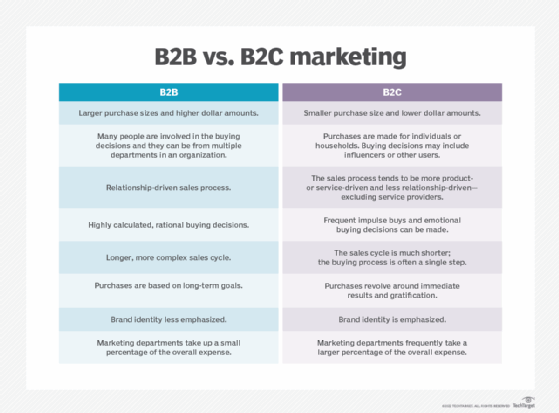
White papers are an important part of generating leads for e-commerce companies. Learn how to create an e-commerce content strategy to improve sales .
Continue Reading About white paper
- 5 customer journey phases for businesses to understand
- 21 lead generation tools to fill the sales funnel
- Sales funnel vs. flywheel: How sales and marketing has evolved
- B2B vs. B2C e-commerce: What's the difference?
- 5 examples of e-commerce content marketing strategies
Related Terms
Wavelength is the distance between identical points, or adjacent crests, in the adjacent cycles of a waveform signal propagated ...
A subnet, or subnetwork, is a segmented piece of a larger network. More specifically, subnets are a logical partition of an IP ...
Secure access service edge (SASE), pronounced sassy, is a cloud architecture model that bundles together network and cloud-native...
A computer exploit, or exploit, is a program or piece of code developed to take advantage of a vulnerability in a computer or ...
Malware, or malicious software, is any program or file that's intentionally harmful to a computer, network or server.
Exposure management is a cybersecurity approach to protecting exploitable IT assets.
A startup company is a newly formed business with particular momentum behind it based on perceived demand for its product or ...
A chief executive officer (CEO) is the highest-ranking position in an organization and responsible for implementing plans and ...
Labor arbitrage is the practice of searching for and then using the lowest-cost workforce to produce products or goods.
Organizational network analysis (ONA) is a quantitative method for modeling and analyzing how communications, information, ...
HireVue is an enterprise video interviewing technology provider of a platform that lets recruiters and hiring managers screen ...
Human Resource Certification Institute (HRCI) is a U.S.-based credentialing organization offering certifications to HR ...
A virtual agent -- sometimes called an intelligent virtual agent (IVA) -- is a software program or cloud service that uses ...
First call resolution (FCR) is when contact center agents properly address a customer's needs the first time they call so there ...
The law of diminishing returns is an economic principle stating that as investment in a particular area increases, the rate of ...

White Paper FAQ (Frequently Asked Questions)
When i first started writing white papers 25 years ago, i looked all over for a faq., when i couldn’t find one, i decided to write one myself..
Over the years, I’ve kept adding to it, until today when it covers 36 questions.
This is undoubtedly the most detailed, most thorough FAQ on white papers anywhere.
Whether you’re a B2B marketer or writer, I hope it helps you understand white papers better.
White Paper FAQ topics
Click any topic to see related questions and answers.
White paper definitions White papers compared to other documents White paper readers White paper sponsors White paper writers White paper success and failure White papers past, present, and future
White paper definitions
What exactly is a white paper.
- Are there any industry standards for these?
- Aren’t there at least some conventions?
What different types of white papers exist?
- Can you combine different types?
What’s the maximum number of points in a numbered list?
What if your idea doesn’t fit any of the flavors, when is each type of white paper most useful, what’s not a white paper, white papers compared to other documents, white papers and blog posts: what’s the difference.
- White papers and brochures: What’s the diff?
- White papers and case studies: What’s the diff?
- White papers and ebooks: What’s the diff?
- White papers and press releases: What’s the diff?
White paper readers
Who reads white papers, why do people read white papers, where do people read white papers, when do people read white papers, how do people read white papers, white paper sponsors, who publishes white papers, why do companies produce white papers, where do white papers fit in the sales cycle, which type of white paper should your firm create, how much does a white paper cost, how long does a white paper take, how do you promote a white paper, white paper writers, what kind of companies need white papers, how hard is it to write a white paper, how long should a white paper be, how long does it take to write a white paper, how much can you charge to write a white paper, what main problems do white paper writers encounter, how can you learn more about white papers, where do you find white paper clients, white paper fails, why do some white papers fail, why are some white papers “challenged”, white papers past, present, and future, where did white papers come from, where are white papers today, where are white papers going in the future, won’t all white paper writers soon be replaced by ai.
Back to top
Ask any 10 people this question, and you’ll likely get 12 different answers.
Here is the best short definition I’ve ever found, after years of looking:
A white paper is a persuasive essay that uses facts and logic to promote a certain product, service, or viewpoint .

Beyond that, I’ve heard a white paper described as:
• A manifesto on how to solve a certain problem • A bait-piece • The glue that holds a campaign together • An information widget • A way to freeze-dry your ideas • The magic Excalibur of marketing!
Clearly, none of these exotic definitions do the trick.
For some better clues, look at the content and format of these documents:
The content of a white paper provides useful information for business people seeking to understand an issue, solve a problem, or make a decision.
The format of a white paper is somewhere between a technical manual and a glossy brochure… between a dry-as-dust academic paper and a colorful annual report.
Some good models are respected magazines/websites like Scientific American or The Economist . Like the best white papers, these publications explain scientific and financial information in a visually appealing way.

Are there any industry standards for these documents?
In a word, no.
Everything from a two-page flyer to a 100-page book has been called a white paper.
There are even “video white papers.” This seems like an oxymoron. How can a video be a paper?
But there are no fixed rules to define a white paper, and no one to enforce them if there were.
If there are no standards, aren’t there at least some conventions?
Well, perhaps.
That White Paper Guy aka Gordon Graham has identified these key characteristics for a white paper :
- A document containing narrative text
- At least 5-6 pages long (2,500+ words)
- Portrait format (landscape tends to be for ebooks)
- Educational, practical, useful information, not a sales pitch
- Used before not after a sale (info after a sale is documentation)
- Provides facts not just opinion
- Includes an introduction or executive summary at the start
- Includes a call-to-action (CTA) at the end
If a document has all these characteristics, it’s probably a white paper.
To elaborate, the main body of a “typical” white paper is 6 to 8 pages long, shorter than in past years. With front matter and back matter, the total length is usually 10 to 12 pages.
White papers come in many different types, with no universal system for labeling them precisely.
Given this, the majority of white papers fall into one of these three types:
1. A backgrounder describes the technical features and benefits of a product or service
2. A numbered list provides a light and lively set of points or concerns about some topic
3. A problem/solution recommends a new, improved solution for a nagging business or technical problem
About 15 years ago, That White Paper Guy proposed that these three types could be remembered as different flavors of ice cream.
Backgrounder = vanilla: old-fashioned and predictable
Numbered list = strawberry: light and lively
Problem/solution = chocolate: deep, rich and long-lasting

For more on these three flavors and how to use them effectively, see my free infographic .
Beyond these, many other terms are commonly used to describe white papers:
- Competitive review
- Evaluator’s guide
- Executive briefing
- Market overview
- Position paper
- Product briefing
- Special report
But all these descriptive terms fit under one or another of the three main types, so these terms are not as helpful.
Can you combine different types of white papers?
Yes. You can combine two of these three flavors like so:
- Numbered list + backgrounder (strawberry + vanilla)
- Numbered list + problem/solution (strawberry + chocolate)
This yields five main flavors of white papers in all: three “pure” and two “mashups.”

A numbered list + backgrounder (strawberry + vanilla) white paper looks at a number of elements or functions of a certain offering.
This kind of mashup promises an easy read and some useful information about a certain offering.
The title should start with a number and end with the product name.
For example:
— 3 Advanced Security Features of Acme Scanomatic 3000 — 5 Hidden Gotchas of Windows 12 — 6 Things You Should Know about Web3

A numbered list + problem/solution (strawberry + chocolate) white paper covers three different aspects of some industry-wide problem.
This kind of mashup promises an easy read along with some deep insight into a nagging industry problem.
The title should start with a number and end with the problem/solution.
— 3 Critical Challenges of Design/Build Projects and How to Solve Them — 4 Pillars of Financial Inclusion and How Bill C-25 Strengthens Them — 5 Backdoors that Let Hackers Steal Your IP and What to Do About Them

That’s because these two have such different viewpoints.
A problem/solution is like looking at a wide view of a whole industry with a telescope.
A backgrounder is like zooming in on one specific offering with a microscope.
It’s difficult to combine both perspectives in the same document. Instead, it’s better to do two different white papers, one of each type.

It’s almost impossible to describe both an industry-wide problem and a specific offering as numbered lists in the same document.
You’ll likely just make a mess.
It’s far better to do two different white papers of the appropriate flavors.
The benefit of a numbered list (aka listicle) is that it promises an easy read.
It sounds light and lively, just a collection of points or items that someone can scan through. So any list up to 9 sounds quick and easy.
Once you get up into the high teens—17, 18, 19—it sounds like a lot more work. And if you go to 20, 30, 40 or 50 items, that starts to sound overwhelming.
Remember why telephone numbers are given as 7 digits: That’s about the longest sequence of numbers most people can remember .
Then there’s the odd vs even quandary.
Odd numbers somehow seem more real than even numbers, which can appear too “neat” or “rounded off.”
That’s why many people believe that a listicle with 3, 5, 7 or 9 items will be downloaded more than one with 4, 6 or 8.
The worse culprit is probably a list of 10, because it sounds so much like a “top 10 list” and everyone knows it was probably padded out to get to 10.
Each type is best for delivering information to prospects at a certain point in their customer journey, as shown below.
For shorthand, “offering” means any product, service, technology, or methodology described in the white paper.
For the three main flavors and two mashups of white paper:
1. Backgrounder : Best for prospects evaluating a shortlist of offerings near the end of the customer journey; also best to support a product launch for journalists, analysts, and channel partners
2. Numbered list : Best to nurture prospects in the middle of the customer journey with a light and lively roundup of points about some topic; also good for spreading fear, uncertainty, and doubt (FUD) about competitors
3. Problem/solution white paper : Best to draw in new prospects at the start of the customer journey as they research a nagging business or technical problem
A numbered list + problem/solution is best in the early half of the customer journey, while the prospect is interested in finding new solutions to their nagging business problem.
A numbered list + backgrounder is best in the later half of the customer journey, while the prospect is starting to dive deeper in the details of the offerings on their shortlist.
These three flavors will likely cover 4 out of 5 of the white papers you see. I call that the 3-4-5 rule.
But what about those outliers, the other 1 out of 5 that just doesn’t fit any flavor?
- What about the results of a survey?
- A history of how a certain technology was developed?
- A day-in-the-life of a business executive?
I’ve written white papers about all those topics.

Captain Barbossa
My best advice is not to sweat it.
The three flavors aren’t iron-clad categories. No one is policing the marketing world to make sure you follow them.
These are intended as useful templates to help frame a white paper in the planning stages, to help decide what to put in and what to leave out.
And to paraphrase Captain Barbossa from the Pirates of the Caribbean , the three flavors are “more what you’d call guidelines.”
You can create a white paper on any topic, for any audience, using any approach under the sun, as long as you remember this key mantra:
A truly effective white paper helps a business person understand an issue, solve a problem, or make a decision.
If you content does that, your readers will thank you. And they won’t give a hoot what flavor you call it… or even if you call it a “white paper” at all.
Remember that there are no “rules” or universal standards for what makes a white paper… and that means many people use this label very carelessly.
By my definition, a white paper is intended to help a business person understand an issue, solve a problem, or make a decision.
There are many other types of useful information, but I don’t consider those white papers.
For example, marketing guru Perry Marshall names 40+ documents that he considers to be white papers, including:
• Application guide • Cheat sheet • Installation guide • Manual (?!) • Optimizer • Pocket guide • Troubleshooting guide • Tutorial
But notice how many of these are actually documentation used after a B2B purchase when installing, learning, or troubleshooting a system.
Those may be useful, but they’re not white papers.
To my thinking, a white paper is strictly a pre-sales document used before a B2B purchase. It’s not documentation or support, it’s sales and marketing.
For a longer discussion, see my article “ When is a white paper NOT a white paper .”
White papers and blog posts are usually quite simple to tell apart.
White papers are usually PDF downloads of 3,000 to 5,000 words.
A good white paper is based on established facts and logical arguments, like a well-researched article in an industry journal.
A white paper generally takes 4 to 6 weeks of intense effort by a group of people. That’s why an effective white paper can be used for a year or two.
Blog posts are usually much shorter web pages of 600 to 1,800 words. A blog post can often be written in a couple of hours.
A blog post can be sheer opinion, or even a rant, more like a letter to the editor. That’s why there are so many blogs: Anyone can shoot off their mouth in a blog.
That’s why most blog posts are relevant for only a few months.
In a way, blog posts are a good place to test out your ideas, as they come together. You can gather comments and feedback, and see how your audience connects with your ideas.
Then you can solidify and back up your ideas in a white paper where you can pour more time and effort into the research, writing, design, and promotion.
White papers and brochures: What’s the difference?
White papers and brochures are almost complete opposites.
Brochures are sales documents intended to create interest and desire.
Today brochures are most often used in B2C for major purchases like cars, trucks, and boats.
They use the techniques of copywriting and advertising. They tend to push “emotional buttons” such as fear, greed, envy, or vanity.
Brochures are generally designed to be scanned: colorful, flashy, and filled with short snippets of text.
White papers , on the other hand, are persuasive essays about a certain product, service, technology, or methodology.
White papers are most often used in B2B for offerings that are relatively new, complex, or expensive.
They use the techniques of rhetoric and plain English. They tend to appeal more to logic through irrefutable facts, iron-clad logic, impeccable statistics, and quotes from industry opinion-makers.
White papers are generally designed to be read. They contain lots of text and some graphics, but not often a lot of pizzaz.
Some companies simply reformat a brochure and call the result a “white paper.” This is a waste of effort. Most readers become irritated when they see a vendor doing this.
Some marketers who should know better urge vendors to make white papers as flashy as brochures. This is not correct.
A white paper should be much more dignified, substantial, and informative than a brochure. Making it look like a sales piece is the kiss of death for a white paper.ny
White papers and case studies: What’s the difference?
White papers sometimes mention case studies for evidence of a vendor’s claims. But the two are quite different.
Case studies are extended testimonials on how a product or service helped someone in the real world. They are typically between 500 and 1,500 words long, written in a journalistic style with many quotes from the actual customer.
The classic format for a case study is Before/After, Then/Now, Problem/Solution:
Before we had this terrible problem, then we found this fantastic product, and After we started using it, everything was sweetness and light.
They are generally 3,000 words or more, written in a somewhat academic style, with no direct quotes from the vendor. A white paper may be told in the Problem/Solution format, but rarely in the Before/After format.
White papers tend to be used earlier in the sales cycle, to help prospects visualize a possible solution to a nagging problem.
Case studies tend to be used later in the sales cycle to reassure a prospect that other buyers benefited from the same approach they are considering.
For a longer discussion, see my article “ White papers versus case studies .”
White papers and ebooks: What’s the difference?
Remember, we’re talking here about ebooks used in B2B content marketing.
A B2B ebook can be hard to tell apart from a white paper. You can often call the very same document either a white paper or an ebook.
In recent surveys, the Content Marketing Institute has grouped white papers and ebooks into one category. And why not?
A B2B ebook can be just about any length on just about any topic.
Many ebooks look more like slide decks than text-driven documents.
Some say ebooks are just prettied-up white papers turned on their sides, with more graphics and less text.
In any case, here are some scenarios when an ebook might work better than a white paper:
1: Your audience is prone to distraction
They may be young or very mobile. An ebook may sound like fun, while a white paper sounds like work.
2: Many competitors publish white papers
If you’re trying to break through the noise of competing white papers, an ebook might sound different enough to be engaging.
You may be able to gain more traction by presenting the same content as an ebook instead of a white paper.
3: No one in your industry publishes white papers
In some industries, white papers are not often seen.
In that case, your document may work better if you call it something else, perhaps a “special report” or “briefing.”
Just remember: The goal is the same.
An ideal ebook—just like an ideal white paper—will help your target audience understand an issue, solve a problem, or make a decision.
If your content does that, you can call it an ebook, white paper, special report, or whatever… and your audience will still thank you for it.
White papers and press releases: What’s the difference?
Press releases are short, factual announcements of interest to a certain audience. This format has existed for perhaps 100 years.
Until recently, press releases were used to influence media “gatekeepers” and gain publicity for their sponsor. The most effective press releases were recycled by journalists into printed articles.
Today, press releases are available to anyone on the Web, without the need for any gatekeeper.
A contemporary press release must be highly factual. Unlike for white papers, there are rules about what a public company can say in a press release.
White papers have also existed for 100 years, although the format evolved quickly since the year 2000.
While a white paper is sponsored by a company—the same as a press release—white papers are generally much longer than press releases, with more room to present facts and develop arguments.
White papers are sometimes packaged with press releases as a “press kit.” And they are sometimes republished in trade magazines as articles.
On the Web, white papers are available to almost everyone. There are no special legal rules on what a company can say in a white paper.
But it’s best to take a journalistic approach, backing up every assertion with statistics, facts, and quotes from respected sources.
White papers are read by almost any B2B executive who is thinking about buying a relatively new, relatively complex, or relatively high-priced product or service for their business.
White paper readers play many different roles in business, such as:
- Corporate executives (decision-makers)
- Finance executives (financial recommenders)
- IT managers and staff (technical recommenders)
- Line-of-business managers (managers)
- User representatives (users)
- In-house supporters of the purchase (“champions”)
In larger companies, all these people may sit together on a selection committee that makes a collective decision.
In smaller firms, some people may wear several of these hats and meet informally to discuss any big purchases.
White papers are especially well-read by IT managers .
One survey showed that they read a median of 30 white papers a year, with some reading more than 50 a year… that’s one a week!
As well, business people routinely pass good white papers up and down the chain of command, both to their managers and their staff.

White paper readers are seeking useful information to help them understand an issue, solve a problem, or make a decision.
This often involves learning about the business benefits or technical details of a product or service they are considering buying.
A survey of IT managers by Forbes.com and Bitpipe (now TechTarget ) showed that they read white papers to accomplish these goals:
- Stay on top of new trends (76%)
- Get information about products and vendors (69%)
- Compare products (50%)
- Help justify buying decisions (42%)
- Develop a shortlist of qualified vendors (33%).
White papers used to be aimed strictly at IT professionals.
Today, many less technical people are involved in B2B buying decisions.
These people are seeking plain-language explanations with clear business benefits, backed up by convincing facts and arguments.
You’ve likely heard that everything on the web should be designed mobile-first.
When it comes to white papers, this is bad advice.
Research into content consumption shows that long-form B2B content is usually viewed on larger screens.
Several studies show that nearly everyone (90%) reads white papers on desktop screens, not mobile devices.
White papers are occasionally (10%) printed for sales calls, press kits, and trade shows.
And some people read them on paper during their commutes by subway or train.
So make sure to write for the screen, and then design for the screen—but a larger screen, not some dinky smartphone screen.
After all, B2B buyers with a problem to solve aren’t often doing their research while they’re rushing around in the field.
B2B buyers do their research in their offices with their big-screen desktops.
People tend to read white papers when they are:
- Dreaming of a way around a pressing problem
- Wondering if anything could solve their problem
- Looking for something to satisfy their wishlist
- Researching a possible purchase
- Drawing up a shortlist of qualified vendors
Executives at the IT portal KnowledgeStorm (now TechTarget ) encourage clients to think of a technology sale in four phases.
1. Vision : A business person is imagining how to solve a problem. At that point, a high-level white paper focused on business benefits can help them visualize the possibilities of a certain offering.
2. Planning : A prospect is trying to map a set of functional requirements to a certain product. That’s when a more detailed, technical white paper can help them understand how a given solution would work in their environment.
3. Evaluation : A prospect is actively looking at a set of products from a shortlist of vendors. The need for white papers has pretty much passed.
An Evaluator’s Guide for a complex product might be helpful at this point. But more often, prospects want the reassurance of seeing case studies from other customers.
4. Acquisition : A customer is actually purchasing and installing a product. They may need added information to help them do so, but it’s more accurate to call this “documentation” rather than a white paper.
After all, the white paper has already played its role and the sale has already been made. Everything from this point on is after-sales support.
B2B executives have more to read, more to remember, and more to do than they can ever get to.
For example, one study showed that the typical manager has more than 50 hours of work sitting on their desk at any point.
They’re frazzled, distracted, and interrupted from all directions. No one is waiting for yet another document to add to their pile?!
No one reads white papers for fun; they read them for work.
So people who read white papers don’t read the same way they might read a novel, paying attention to every sentence.
They tend to skim, scan, and skip… especially when reading off the screen. Don’t you?
This means that white papers must be written and designed for business readers with limited time and attention.
A wall of gray text will not engage anyone today.
To hold and direct the attention of skimmers and scanners, white papers need visual breakers like boxes, bullets, graphics, headings, pull-quotes, and sidebars.
These visuals must point to the key messages of the document in a way that’s easy for busy readers to follow.
If your white paper is crisp, helpful, and easy on the eyes, they will spend some time with it.
If not, they will quickly click away to something more pressing.
For a longer discussion of white paper design, see my article “ 20 top tips on white paper design .”
White papers abound in the technology sector, where they are commonly used to explain software and hardware products.
But there’s no reason why white papers can’t be written about many other B2B offerings.
Any B2B vendor selling anything relatively new, relatively complex, or relatively expensive could likely benefit from a white paper.
This includes companies in sectors like these:
- Computer peripherals
- Consulting firms with new methods
- Medical devices or diagnostic equipment
- Technical or scientific services
- Test or communication equipment
- Training firms with innovative approaches
This adds up to perhaps half a million potential vendors in the English-speaking world that could benefit from white papers.
Vendors of any relatively familiar, simple, and inexpensive consumer products don’t often publish white papers, since there is little need for them in B2C marketing.
After all, most consumers don’t want to read a 10-page document before they buy something.
There may be exceptions—such as energy, investments, and healthcare—where consumers may have to make considered purchases. But these exceptions are few and far between.
Video, social media, and sales pages tend to work better for B2C sales.
B2B vendors publish white papers for many reasons:
- To generate leads
- To support a new product launch
- To educate analysts, bloggers, and journalists
- To educate their own sales force and channel partners
- To nurture prospects through a complex B2B sale
- To win in a technical evaluation against competitors
- To redefine a marketing space
- To stake out a position as a leader in their space
On a strategic level, white papers fit into the widespread trend of content marketing .
Content marketing is based on the belief that skeptical prospects are hungry for a vendor who will serve as a trusted advisor, not just a peddler of their wares.
A white paper can serve this purpose remarkably well.
Remember, a good white paper is more than just background about a product.
The most effective white papers provide useful information to help a business reader understand an issue, solve a problem, or make a decision.
The longer the sales cycle—aka customer journey—the more likely white papers are part of it.
White papers are used in the sales cycle before the prospect makes a purchase.
Different types of white papers work best at different points in the sales cycle:
- To attract fresh prospects at the start of the process (generating leads), the problem/solution or chocolate format works best
- To engage prospects through the middle of the process (nurturing prospects), the numbered list or strawberry flavor works best
- To encourage a purchase decision near the end of the process (support a technical evaluation), the backgrounder or vanilla flavor works best
After making a purchase, the buyer has little need for white papers.
At this point, the customer may need documentation, training, and technical support. They generally do not need any more white papers until an updated product is available, and they must decide whether to upgrade.
If you are creating a white paper, but aren’t sure which flavor is best, you can narrow down the list with three straightforward questions.
1: What is the purpose of this paper?
- Generate leads
- Attract attention
- Nurture prospects through a complex sale
- Cast FUD on competitors
- Influence a selection committee
The best flavors to generate leads at the start of the customer journey are a problem/solution or a numbered list + problem/solution.
In general, the best flavor to attract attention, to cast Fear, Uncertainty and Doubt (FUD) on competitors, or to nurture a prospect through a complex sale is a numbered list.
The best flavor to influence a selection committee near the end of the customer journey is a backgrounder.
2: When will this white paper be used?
Early in the sales cycle, your white paper can be more high-level and general.
Later on, your white paper should be more detailed and specific.
3: Who is the audience? What do they want?
IT people generally want to see technical details. They will tolerate longer papers with modest production values. In fact, a slick and colorful format tends to make them suspicious.
Executives want to see bottom-line benefits summed up in a page or two. They want to hear about lower costs, higher sales, richer profits, or better customer service. Executives expect polished production, with clear graphics they can understand at a glance.
Managers want to hear about streamlined workflow and labor savings. They are keen to see how a new system would affect their area and their people.
User reps want to hear about ease of use, training, and support. They can be more or less technical, but they will likely be detail-oriented. Users are not often a significant audience for white papers. But if a user rep is involved in a selection committee, you need to address their concerns at some point.
A mixed audience or selection committee may want to hear everything touched on above. In this case, you may need several white papers, each with a different flavor and each with content geared to a somewhat different audience.

There are several costs related to producing a white paper:
• Research, writing, and editing • Illustration and design • Translation, if applicable • Printing, if applicable • Promotions
Each of these costs can be either outsourced or handled in-house.
In 2013, extensive research for my book White Papers For Dummies showed that the average fee for a text-only white paper was $4,200.
That means most B2B marketers in medium-sized firms count on spending $5,000 to $7,000 for the text, and another $1,500 for design and graphics.
Translating and promoting are further costs.
And there are “soft costs” for the time it takes subject matter experts to answer questions and e-mails and to review drafts.
A white paper is a significant project in any marketing budget.
Trying to do a white paper on a shoestring budget of $1,000 or $2,000 will not likely yield good results.

After working on 320 white papers, I can tell you that in my experience it takes 6 to 8 weeks to get from the first interview to an approved white paper draft.
And it can take longer if people travel a lot or take their time with reviews.
Illustration and design take an additional week or two.
Any translations, if required, take more time.
And then the promotions begin and run for many weeks or months.
The good news is that a vendor can often continue to use the same white paper for years.
This long lifespan helps to achieve a positive return on the investment in a white paper.
Simply writing a good white paper is not enough.
Tucking it away on a website is not enough.
To earn an acceptable ROI, a vendor must actively promote a white paper in many ways.
The most popular ways to promote a white paper include:
- Post it to numerous websites
- Feature it prominently on home pages
- Send e-mails about it
- Mention it in e-mail sig lines
- Tweet about it on Twitter
- Extract ideas and create blog posts from them
- Create a press release about it
- Mention it in newsletters, e-newsletters, and blogs
- Give it to prospects on sales calls
- Give it to prospects at trade shows
- Pay a third-party service to syndicate it
The best way to promote a white paper is to handle it as a mini-product launch .
Do everything you would do to launch a new product, and your white paper will be on the road to success.
The more effort you invest in promoting a white paper, the more likely it will succeed.
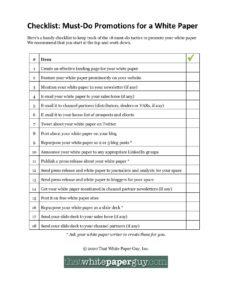
For a free checklist, see my article on the 18 must-do tactics to promote any white paper .
Or click the thumbnail or this link to download the checklist .
White papers writers
Remember, a white paper is a pre-sales document intended to attract prospects or explain an offering.
Any B2B vendor selling anything relatively new, relatively complex, or relatively expensive could likely benefit from a white paper.
For a longer discussion of these three criteria, see my article “ Does your company need a white paper ?”
This includes companies in sectors like:
- Computer hardware and peripherals
- Enterprise software
Vendors of any relatively familiar, simple, and inexpensive consumer products don’t often publish white papers, since there is little need for them in B2C.
There may be exceptions—especially in energy, investments, and healthcare—where consumers may have to make considered purchases.
Writing your very first white paper for a company you don’t know well, in an industry you’ve never written about, can be quite a challenge.
Writing your fifth white paper for a long-term client in an industry you know is not so hard.
Most writers feel that the first white paper they ever wrote was quite difficult.
And many writers who have done fewer than 10 white papers still find these tough.
If you understand the material and work well with others, writing a white paper can be smooth and enjoyable.
If not… quite the reverse.
All in all, writing a white paper is no harder than writing a major magazine article or blog post of several thousand words.
But if you’ve never done that before, it may be very difficult indeed.
That’s a matter of opinion.
I’ve seen everything from a 1-page flyer to a 100-page book called a “white paper.” But those are clearly the extremes.
I believe a white paper should be at least 5 pages long. Anything shorter, and you just don’t have space to develop much of an argument.
Here’s the typical layout for a problem/solution (chocolate) white paper:
- Front matter : cover, contents, executive summary = 3 pages
- Main body : 2,000 to 3,000+ words = 6 to 8 pages
- Back matter : conclusion, call-to-action, About the Company, sources = 3 pages
So that adds up to 12 to 14 pages, about the typical length for a white paper aimed at a business reader today, as shown below.
I’ve written many white papers that were 3,500 to 4,000 words. They needed to be, to cover a big topic in enough detail.
But over the past 20 years, white papers have been getting shorter. So if you can cover the topic in 3,000 words and keep your paper to 12 pages total, that’s ideal.

Technical people will tolerate a longer document if it’s genuinely useful. They see part of their job is keeping up with the ongoing evolution of IT.
As shown below, a white paper aimed at a technical reader doesn’t need to stop at 10 or 12 pages. These can be much longer: up to 30, 40, or even 50 pages.

For example, here are some longer white papers I’ve seen over the years:
- Network Management Systems: Best Practices from Cisco (24 pages)
- Best Practices of Highly Successful Credit Unions: Executive Briefing for CU Leaders (33 pages)
- hp e3000 solution transition advisor: ksam and mpe file system (36 pages)
No one likely complained those papers were too long.
Of course, any lengthy technical documents may start to overlap with product documentation. But as long as readers are looking at this before they buy, I still consider these white papers.
And remember: Whatever the length of your white paper, you must not waste any space, and provide navigational aids so your readers always know where they are in the document.
According to the White Paper Writer Industry Report which surveyed 600+ writers in 2007, the typical white paper takes between 24 and 50 hours to complete.
That means 1 or 2 weeks full-time should be enough to complete a white paper… if everything else falls into place.
Like any B2B writing project, you must allow time for interviews, research, outlining, drafting, and perhaps coming up with diagrams.
A client will expect a few progress reports. And you will need to incorporate their comments into your drafts.

If you manage the process well, writing a white paper can be smooth.
If not, it can turn into a never-ending project that drags on and on…
In general, the more experience a writer has with white papers, the faster they can work.
That’s like anything else in life, right?
Naturally, contract writers tend to produce faster than in-house or non-professional writers since writing is their core competency.
A professional writer will understand the research and publishing process far better than an in-house employee with little experience in the field.

Most B2B marketers expect to pay between $5,000 and $8,000 for an experienced white paper writer.
Another way to look at that is about $1,000 a page for the main body. Front and back matter don’t count.
Obviously, if you have specialized knowledge about a certain niche, you can charge more than a generalist who will need more time and ask more questions.
And the more white papers you have written, the more you can generally charge.
However, AI is muddying the waters. The effect on fees isn’t clear yet, but it won’t be a big surprise if B2B content writing fees go down some.
Among other problems, white paper writers report difficulties with:
- Time management
- Lack of clear feedback
- Changes in direction
- Getting approvals
As well, an inexperienced designer can destroy the readability of an otherwise strong white paper.
Successful white paper writers sooner or later devise ways to deal with these issues.
The most effective strategy is to head off these problems before they happen, by planning and managing a white paper to yield the best possible results.
Here are some quick tips:
1. Round up approvals from all stakeholders early on.
2. Submit short deliverables for discussion , like a creative brief or a one-page outline, before you start writing a 10-page document.
3. Get your client or company to make a tangible commitment to complete a white paper.
For example, freelance writers should get some payment in advance; in-house writers can get an okay to forego other duties while they write the document.
4. Work closely with the designer and make sure they understand the white paper format.
Back to top
You’re in the right place; this White Paper FAQ is an excellent place to start.
This website provides more than 100 articles on every aspect of writing white papers. You’re welcome to explore them.
You can use the Search bar at the top of the left-side menu. Or you can find articles grouped by category in the right-side menu.
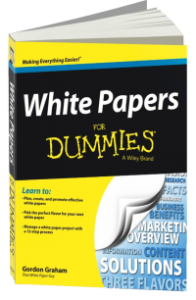
And of course, you can buy my definitive book, White Papers For Dummies .
I crammed 15 years’ worth of tips and advice into this title, which sells for about $25.
Here’s what people are saying about it.
Or you can check out the book on Amazon , where it chalked up more than 50 5-star reviews.
Since my book came out in 2013, some people naturally wonder if it’s out of date.
Honestly, I believe all the basic ideas and tips are evergreen and still relevant.
The three flavors, the publishing process, and tips on writing haven’t changed.
The only thing that’s outdated is any mention of software, such as Windows 7 .
And over the years, Word has become even more powerful.
Today you can use Word’s Read Aloud feature for text-to-speed and the Dictation feature for speech-to-text.
That means you can write a white paper with your voice, and get your PC to read back your text as you revise. I use both those techniques often… and they’re fabulous.
For a longer discussion, see my article “ Tips on using dictation to write .”
Any established copywriter gets this question all the time.
While there’s no quick answer, here are some pointers that might help:
- Take stock of every area you’ve written about over the years
- Then generalize that knowledge into the vertical markets it touches and the horizontal business functions it involves
- Create a persona of your ideal client
- Create a catchy LinkedIn profile
- If you like, create a simple website showing your qualifications and some writing samples
- If you have no writing samples, get some!
- Until you’re busy with paying clients, expect to spend 40 hours a week on your marketing
- Use the phone , not e-mail or social media to contact prospects
- Approach prospects with a give, not an ask
- Keep a swipe file of cool examples to inspire you
- Be passionate about what you do
Other things you should do are to build a web presence , at the very least an effective LinkedIn profile.
And create a “ buzz piece “—a white paper of your own to attract leads.
Then, once you start writing white papers, publish good samples and testimonials on your website.
Some final tips: Pick three marketing tactics you can carry out every week. Use a mix of inbound and outbound tactics.
Even if you’re introverted, choose at least one outbound tactic. You don’t have to do everything. Just keep doing whatever works for you.
For more on this topic, see these articles:
- To get clients, learn how to call a moose
- Writers: 5 strategies for finding white paper clients
- You asked: Where do I find white paper clients?
White paper success and failure
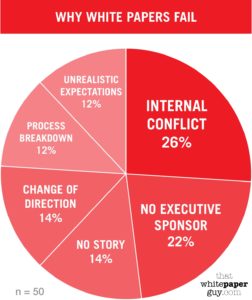
Unfortunately, some white papers fail to generate the business results their sponsors hope for.
In my experience, a white paper can fail in two main ways.
Fail #1: A white paper may never be completed
Many white papers are started, but not all are finished.
And this happens far too often.
At That White Paper Guy, we recently analyzed 300 of our own white paper projects going back to 1997.
Our research revealed that 50 of these white papers—1 in 6 (17%)—were never completed nor published.
Nearly all of these (47 out of 50, or 94%) were abandoned by the client, not the writer.
The main reasons for these failures are shown in the pie chart and summed up below.
Internal conflict : Doing a white paper can reveal a split between two teams who just can’t agree.
No executive sponsor : The white paper champion can leave, get promoted, or be pulled away to other duties. With no champion, a paper can die on the vine.
No story : There may be no evidence to support the white paper’s argument.
Change of direction : A team can decide to go in a new direction, sometimes when a product is delayed or canceled.
Process breakdown : The publishing process can simply break down. This happens most often during reviews. Perhaps some reviewers can’t articulate their views about a draft. Or perhaps some reviewers disagree and can’t resolve their differences.
Unrealistic expectations : A white paper can be doomed by unrealistic expectations about the effort involved or the likely return on that effort.
All these except “no story” are problems with project management… on the client’s side. For example, no outside writer can:
- Compel reviewers to hash out their differences
- Change the priorities set by an employee’s manager
- Set proper expectations if the client doesn’t listen
Note that several other sources agree off the record with these conclusions. Several have stated that their own failure rate was much higher than 1 in 6.
For a longer discussion of this topic, see my article “ 6 reasons why white papers fail: our data and stories .”
Fail #2: A white paper may not be promoted effectively
One earlier answer lists 18 must-do promotions that every marketing team should do for every white paper. Yet not everyone does all these.
As well, some further optional promotions can be done.
Without covering all these bases, few target readers will hear about the white paper, and its reach will be far smaller than it could have been.
Fewer readers lead to fewer conversations and lesser business results.
Unfortunately, some white papers are published with serious defects that reflect poorly on the sponsor.
These defects could be in the content (research and writing) or the format (design and graphics).
I consider this type of white paper to be “challenged.”
Our research revealed that 36 of these white papers—about 1 in 9 (11%)—did not turn out as well as they could have.
Those papers were challenged by flaws in the content, design, or publishing process.
I’m not talking about the occasional typo.
I’m talking about problems serious enough that the white paper will not likely attract its target readers nor generate the expected business results.
There were half a dozen main reasons for this, as shown in the pie chart.
Please note that the “lack of editorial or design skills” existed on the client’s side.
For example, sometimes a client assured us they have a competent designer to handle the formatting of the paper.
But the results fell far short of professional standards for typography, page design, or illustration.
For a longer discussion of this topic, see my article “ 5 reasons why white papers are challenged: our data and stories .”
The term “white paper” arose late in the 19th century in Great Britain.
It was used to distinguish shorter government briefings and position papers with plain white covers from longer reports and policy books with blue covers.

One example that many people point to is the Churchill White Paper from 1922 .
Yet this paper is not especially relevant to today’s B2B white papers.
It’s from the political realm, not the business world.
It’s not structured as a business report or any of the three flavours of white papers.
It’s not even the earliest white paper on the Middle East. Gertrude Bell wrote an earlier one in 1920.
In fact, I have located a precursor to today’s B2B white papers dating back to 1818. (Full report coming by fall 2024.)
(My research was interrupted by Covid staff shortages and then a cyberattack on the British Library in London.)
White papers were used in science and medicine during WWII and the 1950s.
This continued until the widespread adoption of the PC and the expansion of commercial software in the 1980s.
Ever since then, white papers have been popular in the IT industry.
And in the 1990s, the Web provided an inexpensive distribution channel that sparked the explosion of white papers over the past 30 years.
The number of white papers is growing exponentially.
And here’s proof.
In 2002, I ran a Google search for the phrase “white papers” that yielded 2.8 million hits.
A decade later in 2012, the same search got 39.5 million hits: 14 times as many.
Twenty years later in 2022, the same search yielded 782 million hits: more than 50 times as many as a decade earlier…. and 279 times as many as 20 years ago.
Here’s another data point. Over the past 10 years, the annual surveys by the Content Marketing Institute have found that white papers are used by an average of 6 out of 10 of B2B marketers surveyed.
I think we can all agree that the Web is awash in documents called “white papers.” In many sectors, these are a standard part of the marketing toolkit.
That’s because truly effective white papers get results. They get seen by B2B decision-makers and passed around buying committees.
White papers help drive purchases worth billions of dollars worth of products and services every year.
But there’s one problem…
This label is applied indiscriminately to documents that are nothing but thinly veiled sales pitches.
For this reason, the term “white paper” risks becoming devalued.
It may be better to use a different name, such as:
- Research report
- ROI calculator
- Technology backgrounder
Both the 2022 and 2023 Netline reports on content consumption found that B2B readers, even in IT, preferred to download documents called “ebooks” or “guides” far more often than plain old white papers.
For more discussion, see my newsletters for April 2022 and for April 12, 2024 .
White papers will likely continue to be popular with B2B marketers and prospects.
Yet many new formats for delivering information are being explored.
For the kinds of content in a white paper, these new formats include:
- Audios and podcasts
- Explainer videos
- Recorded webinars
Other mediums on the horizon include 3D immersive experiences (aka the metaverse) and virtual trade shows. Other new mediums will no doubt be invented as well.
Although these formats can offer a more engaging experience than simply reading, they usually require higher budgets, more skills, and sophisticated production.
A few companies have published materials they dubbed “video white papers.” But it’s not useful to call these “white papers” since they are not delivered as narrative text in a printable format.
Those who call some other medium a “white paper” are simply trying to trade off the popularity and impact of these documents.
For a longer discussion, see my article “ When is a white paper NOT a white paper ?”

White papers are challenging projects that require a subtle combination of writing to explain and writing to persuade.
That makes these documents the last projects that AI will likely be able to handle.
AI writing tools like ChatGPT are best for creating writeups of events with prescribed outcomes like sports events or the stock market.
After all, if a Little League team wins a baseball game, it doesn’t take a post-graduate degree in journalism to write that up.
If a stock goes down by 5% it doesn’t take “a brain the size of a planet” to write about that.
Prediction: As long as any business person anywhere still needs to understand an issue, solve a problem, or make a decision, they will need some sort of information package analogous to a white paper.
And it will most likely be human beings who assemble this information.
So the skills people develop working on white papers will be in demand for a long, long time.
For a longer discussion, see my article “ Will AI replace white paper writers ?”
If you have any questions about white papers that aren’t answered here, or you find an answer that isn’t clear, please e-mail Gordon at That WhitePaperGuy.com
I’ll do my best to answer.
Originally published: August 2005. Last updated: 14 April 2024.

About Gordon Graham
Worked on 320+ white papers for clients from Silicon Valley to Switzerland, on everything from choosing enterprise software to designing virtual worlds for kids, for clients from tiny startups to 3M, Google, and Verizon. Wrote White Papers for Dummies which earned 60+ 5-star ratings on Amazon. Won 16 awards from the Society for Technical Communication. Named AWAI 2019 Copywriter of the Year.
If you liked this post...

Recommended books on white papers (and everything else)

You asked: Is copywriting different from content writing?

Big idea: How to de-position your competition [includes case studies]
This was incredibly helpful! I’m a “solo-prenuer” and just started my white paper journey today. You have so many helpful & thorough details. Thank you for this free advice!!
Leave a Comment Cancel Reply
This site is protected by reCAPTCHA and the Google Privacy Policy and Terms of Service apply.
Need a great white paper?

Nimmit Prabhackar

5 Differences Between White Papers and Research Papers
I have often been asked about the differences between white papers and research papers. You are likely to wonder about this yourself if you have a white paper described to you. Indeed, I make a comparison between the two in my About Me page to highlight the salience of a white paper.
While both kinds of papers are long-form documents that research a given topic to inform the reader, there are important differences. Let’s examine them in more detail.
A research paper, as the name suggests, researches a specific subject. It’s objectives are to observe, analyze, infer, and inform. It reviews topical knowledge and seeks to further it by studying new hypotheses or revisiting old ones in light of new methods or data. Through analytical and critical study, such papers expand our understanding of the world.
A white paper is written to inform and persuade. White papers are generally written to explain complex situations or concepts to an audience to make the case for why a change is necessary. In most cases, white papers propose one or more prospective solutions to make the distinction between the status quo and the proposed future state. The balance between information and persuasion is contextual and depends on the familiarity of the audience with the subject.
2. Audience
A research paper writer’s peers are usually the audience for the paper. They have a great degree of familiarity with prior knowledge the paper is built on, analytical techniques, and writing conventions. The writer knows this and so does not spend too much space on explaining rudimentary concepts.
A white paper is wholly geared towards its audience. Therefore, understanding who the paper is for and what it is meant to achieve are critical to its success. Because a white paper is meant to be a persuasive document, it needs to understand what concerns the audience and how the solutions proposed by the paper can benefit them. A white paper may need to be more thorough in explaining terms and processes that are unfamiliar to the reader.
3. Content & Length
There is no upper limit on the length of a research paper. Thus, it can freely delve into details as long as its contextually appropriate for the paper. The paper must also do this to strengthen its hypotheses/theories and to stand scrutiny in peer reviews. A research paper put through thorough checks by the writer himself serves to build his credibility.
A white paper, theoretically, can be of any length. But in most cases, a concise paper is more likely to be read by an audience, be it decision makers or casual readers. This doesn’t mean that a white paper can make claims without evidence. In addition to being factual, a white paper writer also builds credibility by speaking to the audience’s concerns.
4. Presentation
A research paper is bound by certain conventions and they differ depending on the topic. These conventions could be about the fonts, figure captions, index, citations, footnotes, page layouts and so on. Physics papers may look different compared to psychology papers. Similarly, these papers will be featured in different journals that typically focus on specific scientific areas. So a journal of mathematics may look quite different from that of biology. Research papers are more constrained in how they are presented.
A white paper, on the other hand, has a great deal of freedom here. This helps an organization commissioning the white paper ‘personalize’ it by applying its own branding through custom fonts, layouts, and color usage. Of course, care must be taken to ensure the document provides information in an easily digestible format but there are no rigid format constraints. Ironically, this actually makes it one of the more challenging aspects of a white paper. More freedom means more choices and hence more decisions. Designers are often commissioned alongside white paper writers to put the finishing touches to the document.
5. Distribution
Research papers can be, but are usually not, used as marketing documents. Because their audience are the writer’s peers, students of science, and casual researchers, they are featured in journals, books, and as standalone articles in scientific libraries. Journals and libraries usually require subscriptions. Private organizations tend to feature their articles on their websites.
For maximum reach, white papers are freely made available on the commissioning organizations’ websites. These papers are also distributed by communications departments to decision makers, either as physical or electronic copies. One or two page summaries, covering the gist of the papers, can also be distributed to prospects at locations where they interface with the organizations’ representatives.
I hope this article clarified some of the main differences between white papers and research papers. Are you interested in white papers or want to have one written for your organization? I can help. Please visit the Solutions page to learn more about how to get started.

IMAGES
VIDEO
COMMENTS
First, they have two very different purposes. The purpose of a research paper is, for students, to prove mastery of a subject. For professionals, it’s to advance knowledge by sharing discoveries. A white paper, on the other sheet, is a tool to share information and influence decision-making.
We explain the pros and cons of four types of research paper: White papers, working papers, preprints and academic journal articles.
What makes a white paper different from a business proposal or even an industry blog? The primary difference between a white paper and other texts is ultimately the depth of research. Business proposals differ in two important additional ways:
A white paper is a report or guide that informs readers concisely about a complex issue and presents the issuing body's philosophy on the matter. It is meant to help readers understand an issue, solve a problem, or make a decision. A white paper is the first document researchers should read to better understand a core concept or idea.
Publishing research papers usually takes a long time as it requires peer reviews. White papers show outlines on a particularly complex issue and tackle the best solution to that particular problem. They are more focused on solving industry problems presented through a technical discussion.
A white paper is a research-based report which offers a focused description of a complex topic and presents the point of view of the author or body represented by the author. The purpose of a white paper is to give readers understanding of an issue, which in turn helps them solve a problem or make a decision.
White papers rely on original research as well as other pieces of market, scientific and technical research available to the general public or hidden behind paywalls or membership requirements. A diversity of sources lends authority to a white paper and can strengthen an author's analysis.
Can you combine different types? What’s the maximum number of points in a numbered list? What if your idea doesn’t fit any of the flavors? When is each type of white paper most useful? What’s NOT a white paper? White papers compared to other documents. White papers and blog posts: What’s the difference? White papers and brochures: What’s the diff?
What is a white paper? A white paper is a document used to inform readers on a particular topic/issue with the intention of using authoritative knowledge and research to argue for a specific solution.
This article describes 5 differences between white papers and research papers to help you pick the right format for your context.